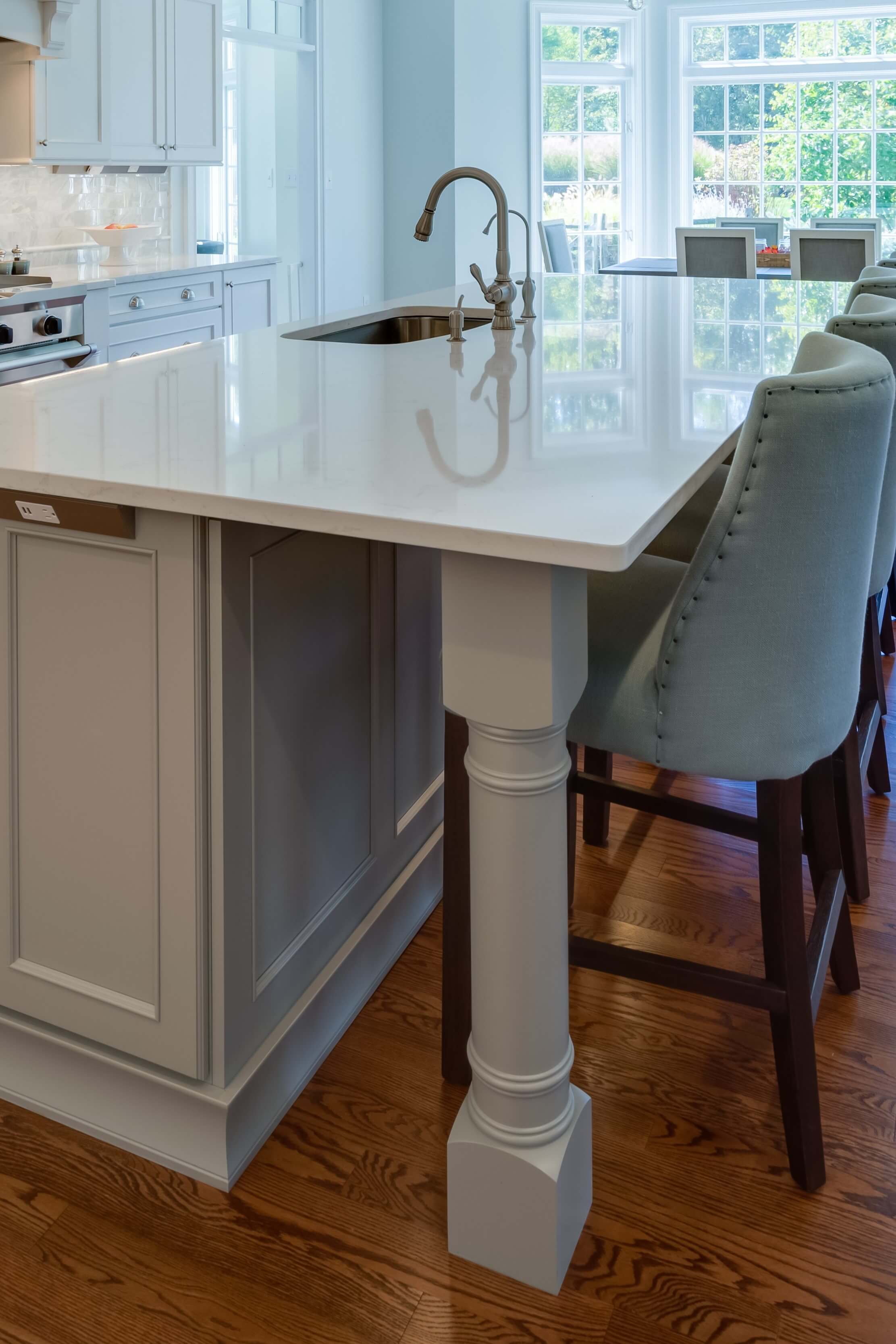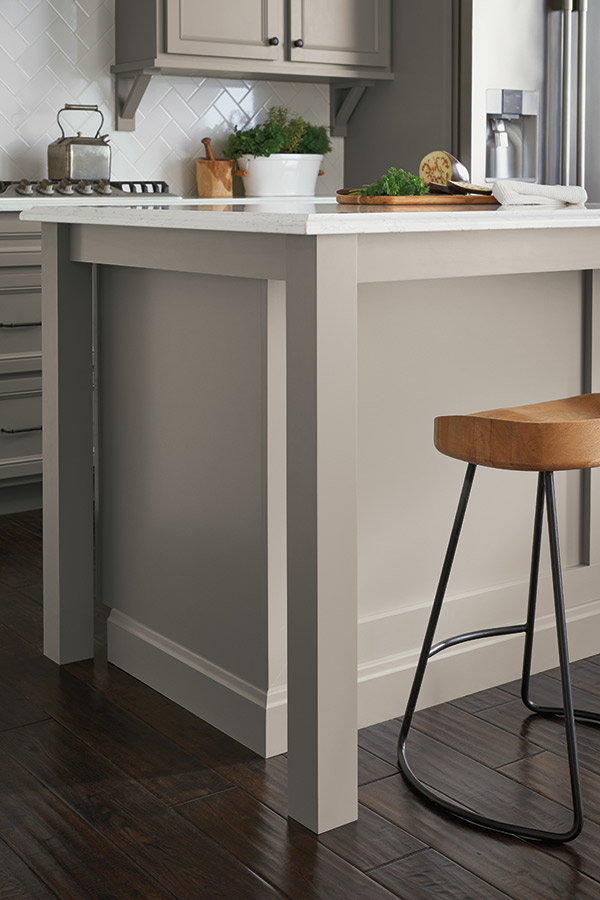Update Your Kitchen's Aesthetic with Premium Legs For Kitchen Island
Update Your Kitchen's Aesthetic with Premium Legs For Kitchen Island
Blog Article
Trick Considerations for Finding the very best Legs For Kitchen Area Island for Your Design
When picking the optimal legs for your kitchen island, numerous essential factors to consider enter play that can considerably influence both performance and visual appeals. The selection of design, height, and material have to line up with your total kitchen area layout to guarantee an unified look. Furthermore, security and maintenance demands are essential for long-lasting usage and ease of treatment. Recognizing these elements can improve your cooking area's practicality and visual allure, yet the subtleties of each consideration can often be neglected. What effects might these selections have on your kitchen's general ambience?
Determine Your Design Choice
Establishing your design choice is critical when choosing the excellent legs for your kitchen area island. The legs of your kitchen island not only offer a practical purpose yet also add substantially to the general visual of the area. Identifying your design style-- be it modern, rustic, conventional, or commercial-- is important.
For a modern-day kitchen area, think about streamlined, minimalistic legs that enhance tidy lines and open rooms. In comparison, a rustic setup may take advantage of more durable, farmhouse-style legs made of recovered products. Typical cooking areas frequently prefer turned or luxuriant legs, which can add a touch of style and refinement. Meanwhile, a commercial aesthetic could call for steel legs that emphasize a raw, unfinished look.
Furthermore, take into consideration the elevation and percentage of the legs in relation to the island's surface area. Eventually, your design choice will influence not just the option of legs yet likewise the general harmony of your kitchen's layout.
Choose the Right Product
Picking the ideal material for your kitchen island legs is pivotal in making sure both longevity and aesthetic appeal. Different products provide unique advantages, and the selection commonly shows your layout preferences and practical requirements.
Timber is a prominent option, offering warmth and versatility. It can be discolored or painted to match your kitchen design, making it adaptable to different designs, from rustic to modern. Nevertheless, timber might require routine maintenance to protect its appearance and honesty.

If you look for a distinct touch, think about acrylic or glass products. They can produce an illusion of space and lightness in your kitchen, making them an outstanding option for smaller areas - Legs For Kitchen Island. These alternatives might need mindful handling and maintenance to avoid scrapes.
Inevitably, the product you choose need to align with your cooking area's overall style, guaranteeing that the legs offer both attractive and functional functions.
Take Into Consideration Elevation and Percentages
When designing a kitchen island, elevation and percentages play an essential role in making sure performance and convenience,. The conventional height for a kitchen island typically ranges from 36 to 42 inches, aligning with conventional counter heights or bar heights, respectively. This dimension is crucial for balancing with surrounding feceses and countertops, making it possible for convenience of usage throughout meal preparation and social interactions.
In addition, the island's proportions must enhance the general kitchen layout. A well-proportioned island should not overwhelm the area; instead, it ought to produce a balanced visual. Take into consideration the proportion in between the island's size and size, ensuring it supplies adequate surface area without crowding the cooking area. A basic guideline is to maintain a size of 24 to 48 inches, assisting in movement and access.
Moreover, the elevation of the legs or base can influence the aesthetic appeal and performance. Taller legs may provide a more modern-day, airy feeling, while shorter ones can evoke a traditional, grounded look. Eventually, meticulously thinking about elevation and proportions will lead to a cooking area island that is both visually enticing and functionally effective, enhancing the general design of the area.
Assess Security and Resilience
A cooking area island's legs must not only enhance its height and proportions however additionally offer appropriate security and resilience to sustain day-to-day activities. The legs are vital to the total functionality of the island, as they bear the weight of the counter top and any kind of added loads, such as home appliances or cooking jobs.
When assessing stability, it is important to take into consideration the leg layout and product. For example, durable metal or solid hardwood legs commonly provide remarkable toughness contrasted to lighter products like crafted timber or plastic. In addition, a bigger base can boost security, lowering the threat of tottering or tipping throughout usage.
Longevity is just as vital; the legs need to stand up to damage from day-to-day usage. Think about surfaces that shield versus scrapes, dents, and moisture, especially in a kitchen setting. In addition, review the top quality of building, such as joints and fastenings, which can significantly influence the legs' lasting performance.
Inevitably, purchasing well-crafted legs that prioritize security and sturdiness will guarantee your kitchen area island remains a reliable work space for many my response years to come, boosting your culinary experiences while keeping aesthetic allure.
Aspect in Maintenance and Treatment
Maintenance and treatment are crucial factors to consider for making sure the longevity and efficiency of kitchen island legs. When choosing legs, it is vital to review the materials made use of, as different choices require varying degrees of upkeep. Wood legs may call for periodic refinishing or sealing to protect against moisture damages and scrapes, while metal legs may require normal polishing to preserve their luster and stop rust.
Additionally, the coating related to the legs can influence maintenance requirements. A high-gloss coating may be less complicated to clean however can reveal fingerprints and scratches quicker than a matte surface. It is a good idea to pick materials and finishes that match your way of life; for instance, if you regularly organize gatherings, opt for resilient materials that can stand up to damage.
In addition, consider the cleaning process associated with maintaining these legs. Smooth surfaces frequently need very little effort, while elaborate styles may build up dust and grime, necessitating more labor-intensive cleaning approaches. Legs For Kitchen Island. Inevitably, considering the upkeep and treatment More hints needed for your selected kitchen area island legs will not only enhance their aesthetic appeal but additionally guarantee their useful stability gradually
Final Thought
In final thought, selecting the optimal legs for a kitchen island demands mindful consideration of various factors, consisting of layout style, material choice, height, upkeep, and stability. Each element plays an essential duty in making sure that the legs not only enhance the visual charm of the kitchen yet likewise provide the essential support and resilience for day-to-day use. A well-informed choice will ultimately add to a practical useful source and aesthetically pleasing kitchen area atmosphere.
The legs of your kitchen island not only serve a useful function however also add substantially to the overall visual of the space.Maintenance and treatment are important considerations for making sure the longevity and efficiency of kitchen island legs. Wooden legs might require routine refinishing or sealing to stop dampness damage and scrapes, while steel legs may require normal polishing to preserve their sparkle and avoid corrosion.
Ultimately, factoring in the maintenance and treatment needed for your chosen kitchen area island legs will certainly not only improve their visual allure but likewise guarantee their functional integrity over time.

Report this page